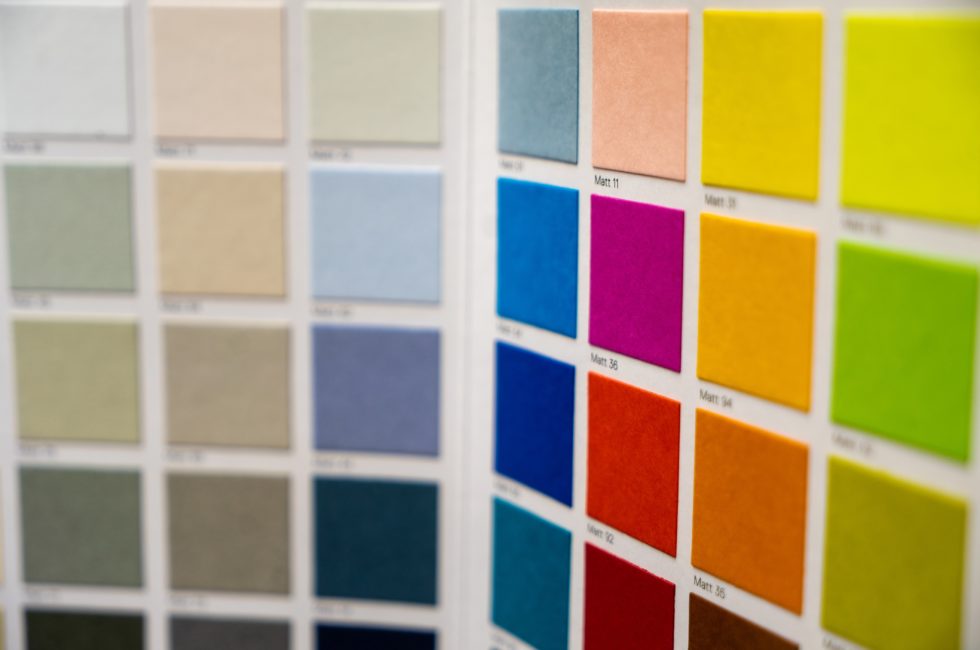Color is the easiest way to transform the spaces in your home. Choosing a color palette for specific rooms is always fun but it can also be challenging when there are countless options to choose from.
Despite the challenge, nothing is more satisfying than finding a color scheme that speaks to you and your style.
Color choice is subjective, and despite the assurance that there is no right or wrong when it comes to your style and color preferences, consulting an interior designer in Winter Park will help you settle on a color palette in the right complementary hues that will go well together in your home.
Follow these tips on how to successfully choose a color palette that perfectly represents your personal style.
The Search for Your Ideal Color Palette
Cohesive Color Scheme for the Entire House
Color selection can be daunting. A great tip for choosing interior paint colors for your home is to establish a cohesive color palette throughout the entire house that can also be incorporated into other elements of a space.
This doesn’t necessarily mean that every room in the house has to be the same color, though. Regardless of what type of color palette you choose, it’s all about balance. An accent or supporting color in one room could be the main color in another space in the home.
A cohesive color scheme or mood board for the entire home will make it easier for you to make design decisions down the line, whether you’re working on a simple room redesign or a home renovation design.
While bedrooms are completely private spaces that may be exempt from the overall color scheme, especially if you have children or other members of the household, it’s important to consider how the color palette will affect everyone using the common areas.
Consider the Sources of Light in a Room
Lighting makes one of the biggest impacts in a room, including the appearance of any color. A color you love at the store, under bright lights, can look completely different in your home because of the light. Make sure to take samples of the colors you like and paint a swatch in different areas of the room to see how it looks in the light compared to the shadows, how it looks during the day versus night.
Some would argue that low-light rooms should be painted in light colors to make the space seem bigger while others say to embrace the darkness and choose a moody color for all the walls as well as the ceiling. You can also choose a color scheme that ranges from dark to light – use darker colors for the floor, medium color for the walls, and lighter colors for the ceilings.
The possibilities for color and material selection in a space are limitless, just make sure to test it against the light in the room.
Consult the Color Wheel
The color wheel was created to demonstrate the relationships between different colors – complementary colors, split complementary colors, and analogous colors are just three examples of this. It helps you see different combinations of colors – a complementary color scheme is visually dynamic while an analogous color palette is more peaceful and makes a space feel balanced.
Consider the Psychology of Color
Color can affect mood and energy levels, so think about the function of the space and how color plays into that. Choosing a color palette with green and blue creates a casual and relaxing atmosphere. The analogous color scheme works well in private spaces like your bedroom. On the other hand, warm colors make a space feel more energetic, so these colors might work well in the living room or kitchen.
Color Palette Selection Comes Down to Preference
If you’re still not satisfied, follow your instincts and choose a color palette you’re comfortable with and ultimately like. Don’t worry about the top color trends of the year or whether other people like the colors you’ve chosen. At the end of the day, you want to make your home feel like you; it’s about what you like.
These tips are just here to guide you; choosing a color palette simply comes down to your personal preference, whether it’s soft and subtle neutrals, clean and bright colors, or bold and moody tones.
A color palette isn’t limited to just the walls and ceilings of a home; it also informs the choices you make about decor, furniture, and other elements of the space. You can tie in the different colors of your palette in the curtains, accent chairs, the rug, and so on in order to coordinate the colors in a room perfectly. Whether you opt for a cohesive color scheme throughout the entire house or you decide each room is a standalone project, take the time to consider the color options carefully.
If you need help choosing a color palette for your home, contact us today for a consultation. Wolfe-Rizor Interiors will guide you so you can make the right decision to turn your dream space into a reality.

